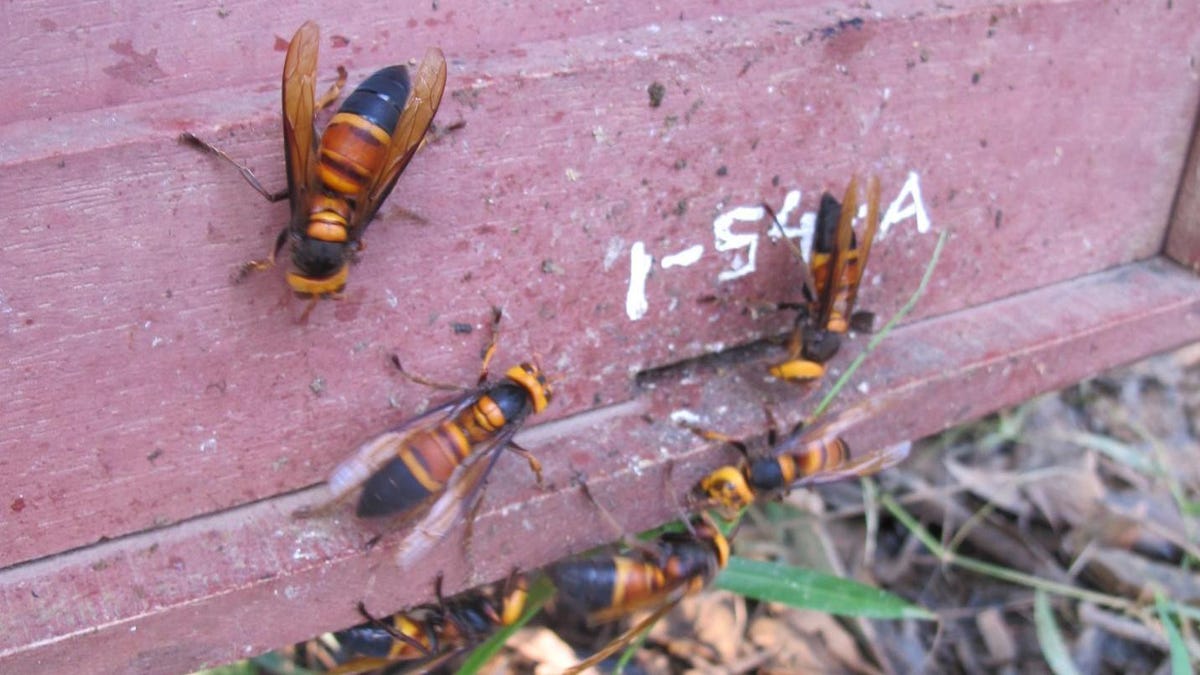Honeybees use poop as weapon against deadly murder hornets
This is also the first documentation of honeybees wielding tools.
In the US, we've been pretty freaked out about murder hornets, but those invasive giant Asian hornets also pose a threat to bees. Over in Vietnam, some honeybees discovered a powerful defense against the dangerous predator: animal feces.
A study conducted in Vietnam by researchers at the University of Guelph in Canada documented for the first time the use of tools by honeybees. The tool just happens to be poop with a purpose. It turns out that dung deters the giant hornets from invading honeybee hives.
The team published its findings in the journal PLOS One on Wednesday. "Our study describes a remarkable weapon in the already sophisticated portfolio of defenses that honey bees have evolved in response to the predatory threats they face," the paper said.
Murder hornets are known for marshaling coordinated attacks on honeybee hives where they kill the adult residents and take away the bees' young for food.
A honeybee in Vietnam holds a piece of dung with its mouth parts.
The researchers documented how Vietnamese honeybees collected feces and dotted them around the entrances to their hives. In an experiment, the researchers found that the bees preferred to gather extra-smelly dung from pigs and chickens when given the opportunity.
"The hornets spent less than half as much time at nest entrances with moderate to heavy dung spotting as they did at hives with few spots, and they spent only one-tenth as much time chewing at the hive entrances to get at the bees' brood," the university said in a statement on Wednesday.
The team considers this behavior to be tool use because it involves using an object from the environment for a purpose, and that the bees shape the dung with their mouths. Why dung works to ward off the hornets is still an open question. The smell may act as a repellant, or it may hide bee odors that attract the hornets.
Murder hornets have been a particular concern in North America due to the threat they pose to bee populations. Honeybees in Canada and the US may not have the same tool-use abilities at their cousins in Vietnam. "They haven't had the opportunity to evolve defenses. It's like going into a war cold," said lead author Heather Mattila.
Authorities in Washington state destroyed a murder hornet nest in October, but there could be more out there. The hornets are a clear threat to bees, but also a worry for humans. Said study co-author Gard Otis, "I got stung by one and it was the most excruciating sting in my life."


